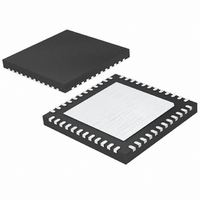LTC2393CUK-16#TRPBF Linear Technology, LTC2393CUK-16#TRPBF Datasheet - Page 13

LTC2393CUK-16#TRPBF
Manufacturer Part Number
LTC2393CUK-16#TRPBF
Description
IC ADC 16BIT SER/PAR 1M 48-QFN
Manufacturer
Linear Technology
Datasheet
1.LTC2393ILX-16PBF.pdf
(24 pages)
Specifications of LTC2393CUK-16#TRPBF
Number Of Bits
16
Sampling Rate (per Second)
1M
Data Interface
Serial, Parallel
Number Of Converters
1
Power Dissipation (max)
175mW
Voltage Supply Source
Analog and Digital
Operating Temperature
0°C ~ 70°C
Mounting Type
Surface Mount
Package / Case
48-WFQFN, Exposed Pad
Lead Free Status / RoHS Status
Lead free / RoHS Compliant
Available stocks
Company
Part Number
Manufacturer
Quantity
Price
Part Number:
LTC2393CUK-16#TRPBFLTC2393CUK-16#PBF
Manufacturer:
Linear Technology
Quantity:
135
APPLICATIONS INFORMATION
Internal Reference
To use the internal reference, simply tie the REFOUT and
REFIN pins together. This connects the 4.096V output of
the internal reference to the input of the internal reference
buffer. The output impedance of the internal reference is
approximately 2.6kΩ and the input impedance of the in-
ternal reference buffer is about 85kΩ. It is recommended
that this node be bypassed to ground with a 1μF or larger
capacitor to filter the output noise of the internal reference.
The REFSENSE pin should be left floating when using the
internal reference.
External Reference
An external reference can be used with the LTC2393-16
when even higher performance is required. The
LT1790-4.096 offers 0.05% (max) initial accuracy and
10ppm/°C (max) temperature coefficient. When using an
external reference, connect the reference output to the
REFIN pin and connect the REFOUT pin to ground. The
REFSENSE pin should be connected to the ground of the
external reference.
Figure 5. 16k Point FFT of the LTC2393-16, f
–100
–140
–120
–180
–160
–40
–60
–80
–20
0
0
100
FREQUENCY (kHz)
200
300
DYNAMIC PERFORMANCE
Fast fourier transform (FFT) techniques are used to test
the ADC’s frequency response, distortion and noise at the
rated throughput. By applying a low distortion sine wave
and analyzing the digital output using an FFT algorithm,
the ADC’s spectral content can be examined for frequen-
cies outside the fundamental. The LTC2393-16 provides
guaranteed tested limits for both AC distortion and noise
measurements.
Signal-to-Noise and Distortion Ratio (SINAD)
The signal-to-noise and distortion ratio (SINAD) is the
ratio between the RMS amplitude of the fundamental input
frequency and the RMS amplitude of all other frequency
components at the A/D output. The output is band-limited
to frequencies from above DC and below half the sampling
frequency. Figure 5 shows that the LTC2393-16 achieves
a typical SINAD of 93.9dB at a 1MHz sampling rate with
a 20kHz input.
SNR = 94.2dB
THD –105dB
SINAD = 93.9dB
SFDR = 108dB
400
S
239316 G08
= 1Msps, f
500
IN
= 20kHz
LTC2393-16
13
239316f














